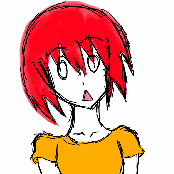This essay was written at the end of June 2013 as the culmination of a course in creativity and play for professors at my university. As faculty development seminars go, this was certainly longer and much more engaging. If ever there was a teachable moment, this was it.
From the Penguin to Oblivion:
A Journey through the Creative Process
Introduction
“Wherever you are, there is somewhere further you can go.” Ingold
In this essay, I will redraw the path I took during the academic year (2012-2013) tracing a journey from teaching to play to creativity and back again. As Ingold (2007) observes, some journeys don’t simply take the traveler from point A to point B. Indeed, this story tracks a wayfaring walk where the sites along the way tell the tale as much as does the wayfarer’s scripted walk. This is not a journey limned by a GPS device. In fact, it is much the opposite. It is a walk that doesn’t map clearly or coherently. Until the end, perhaps, when the hero (me) understands the purpose and portent of the trip in the first place which is to take a different journey the next time and to have my students along for the walk. We could take the car or the bus with a guide setting out on a prescribed tour but that would be a different journey with another professor.
This is also a journey of discovery as a professor. Renowned educational philosopher, Parker Palmer, argues that we cannot teach without courage (Palmer 1998). In The Courage to Teach, he argues convincingly that professors need the courage to be ourselves in our teaching–no more, no less–but deeply ourselves. In taking up this challenge, he asks the most important question, “Who is the self that teaches?” He notes that many of us who choose to teach carry in our minds’ eye the image of “the” professor we wish to become—a brilliant lecturer, a compelling storyteller, the captivating theoretician, or the Socratic genius. However, as Tompkins (1990) notes, a focus on performance is on what sociologists call impression management can get in the way of student learning. Balancing those images with the mandate to be truly ourselves can set us on a journey of creative self-making and refashioning. It is hard enough to appear in front of a class of thirty young men and women, who are tamped down in the expectation of “another boring class,” determined to be more confident, competent and well-organized. To be more alive, more mindful, more fully realized, more authentically ourselves–maybe, that’s just too much to expect. As she writes,
The classroom is a microcosm of the world; it is the chance we have to practice whatever ideals we may cherish. The kind of classroom situation one creates is the acid test of what it is one really stands for (Tompkins 1990, 656).
I am a late career academic, joining the professoriate as a sociology professor in my fifth decade. I have a lifetime of experience in the so-called “real world” behind me, but not really behind but rather infused in direct and indirect ways. These influence my teaching and research, of course. As Florida Scott-Maxwell writes in The Measure of My Days,
You need only claim the events of your life to make yourself yours. When you truly possess all you have been and done…you are fierce with reality (as cited in Palmer, 1998).
Like many things done later in life, I have found learning to be a professor a steep curve. During this last academic year, I have taken the challenge—to bring my creative side to my classroom. This means making deeper and more inspired connections between the work I do off campus in music, photography, creative writing, community engagement, and other pursuits with my teaching, research and service.
As I will discuss later in this essay, I have long tolerated a division between my left-brain and right-brain orientations to the world and have found this a useful conceptualization of how one understands and approaches the world (Edwards 1979; Pink 2006). In the past academic year, I had decided to be divided no longer. Like Whitman’s Song to Myself where he rejects “resistance to the brain that divides,” (cited in Hyde, 211). I am seeking a way to bring a richer way of encountering teaching and the world I teach into the classroom.
In my application to join the Faculty Creative Fellows project, I suggested that I would be good candidate because I considered myself a creative person and was eager to meet with other faculty members to talk about how to be more creative in my teaching. I also wanted to work on a new course in the sociology of creativity, a long interest of mine. Finally, I was interested in developing a proposal to the administration at Bryant University for a commencement award that recognized creative expression, the first such award in the institution’s history. I jumped into this faculty development opportunity without much concern about the design or content of the yearlong commitment. I trusted our leaders, Bob Shea, Director of Faculty Development and Terri Hasseler, Professor of English and Cultural Studies, and imagined that the experience would be productive and enriching.
Jumping into play with one toe in the water
I can summarize my thoughts coming into the Creative Fellows course—happy anticipation. The course presented for me a way to use play and creativity to build a bridge from my creative side to my teaching side and back again. I must admit I have been hesitant to do this in any deliberate or well-considered way prior to this opportunity. My initial definition of play and creativity equated this with stepping out of my routines, my planned day, my left-sphere dominated brain and to let play evolve slowly perhaps, and steadily, or maybe, not at all. I see play and creativity as my counter weight to boredom and repetition, on and off campus. Buddha said that we cannot walk into the same river twice because of the nature of impermanence in our world and in our lives and I believe that this is the case for teaching, as well. I cannot to teach the same class twice—the students are different from last semester’s class; we are living in the world together and have common, yet different experiences; I may have just read an article that has me reconsidering my understanding of school reform, for example; I may be weighing the impact of some new research. I always aim to change the script but increasingly, I am interested in changing my role and my character. In wading through the daily business of our lives, we can play out our roles, superficially and alienated, as if the act of teaching was indeed a performance. Ask anyone who is pretending to be doing something in a half engaged spirit–like teaching–and it is easy (and painful) to feel deadened by a lack of imagination, energy and creativity. The drive to do something new and more authentic may take us back to play as inspiration.
As I participated in the seminar, these themes of divisions, categories, and tensions have reverberated through much of my work created for the course. As I trace my life’s path, I see multiple forks in the road. A sharp turn toward one direction, which in good time and order, sends me back the other way, usually by way of a long meandering, and not wholly conscious choice. In my career, I have had many jobs with few consistent themes. My life mirrors what Mary Catherine Bateson (1989) proposed reflected the lives of women—a composed life, not a straight line stretching from point A to Point B, but rather one knitted together with themes, where each age echoes another. I do see those themes in my creative work and my professional work but my mapping out of these developments suggests nests, networks, cul-de-sacs, dead ends, and tendrils—a far stretch from a planful, left-brained path where one step is a necessary and sufficient precursor to the next stage.
During my career and personal life, I have always been blessed by creative ideas, by flashes of work I want to do, of ideas I wish to pursue. In the creative exercises we been assigned, I had no end of ideas but I was always challenged to execute these in a shape that follows my early vision. This play-work to me is similar to the back- and forthingness of any endeavor. One takes a step, is blessed with an insight, sees how one thing leads to another or away from it, and waits for a shout of inspiration while deeply engaged in something else. The essential genius of the Creative Fellows project was that it has presented challenges to us to create something that wasn’t there before—not manifested anyway. Stephen Johnson (2010) writes about the long hunch—the slow evolution of ideas that seem to emerge one day fully formed when, in fact, the mind has been crafting and tooling those ideas on a slow course of development. With the “adjacent possible,” creativity comes with connections and communities, with broadly seeking inspiration and putting one’s toes and eyes in places where the unfamiliar is encountered. This is exactly where the Creative Fellows project brought me.
I loved the purposelessness that was part and parcel of the instructional design in this course and found myself turning toward the projects that Professor Hasseler assigned as a meditative practice—to clear my mind in order to create something that the noise and busyness of faculty work in a complex organization typically drown out. Now, my challenge is turning a richer focus toward teaching and writing. STOP
The source of these ideas has been a lifelong tug of war for me between what some would characterize as right vs. left brain dominance, as intuition vs. rational analysis, as divergent vs. convergent thinking, as expansive thinking vs. more narrow working through. Play and creativity have always been for me a way to fashion projects for myself—inside the classroom and beyond it–that are both creative and intellectually challenging. Play creates the ideas and the insights and the work to get the project organized and moving ahead moves into another dimension.
A few years ago, I became a more serious photographer taking pictures of seaweed that had washed up after southeasterly storms on Narragansett beach. The images were lovelier and more stunning than I had imagined they would be. I decided to make a structured study of the seaweed, researching the genus of seaweed, identifying their characteristics, studying the geology of the sand, the shape of the tides, the lines and whorls of the water at the edge of the beach and writing about the history of seaweed on the southern New England coast. This all come together in self-published books using Blurb software. What was interesting to me was that taking the images AND researching their vocabulary added on a dimension to my experience of walking the beach that made it a richer, more compelling experience. So, although I walked the same walk for twenty-three years, it was by no means the same walk any longer. Experiences like this left me open and excited about play and creativity.
Seeing the forest and the trees
Like most non-artists or even artists who decide to move into another medium, I had a great fear and trepidation of making art. Reframing this as play made this work easier. I see some direct connections between play and creativity and productivity, not in the sense of efficient production of work but instead in the fomenting of ideas I am interested in pursuing. So, the obstacles that I can typically put in my way of doing the work I should be doing can be readily enough managed if I allow myself the place and time for the joy of play.
One obstacle for me is that I seek novelty. I love to learn new things and explore doing something new, with or without guidance, usually without, so I seldom move to a place of mastery in these fields. I like to improvise, to move along my own path of exploration. While I have been playing music for nearly fifty years, I am just now taking music lessons but I am realizing the power of a teacher to guide me through. That is embarrassing for a teacher to admit, I imagine.
Besides the time and place to create, I would add courage, not so much to make, but to share what has been made. Recently, I have shared some writing I have done with colleagues. The courage to fail, or to succeed, is less essential when one is committed to the private making of things and ideas. I think these concerns surface as real obstacles to building creativity into my daily routine. The sharing with a safe community would be a blessing. I know that I have certain creative strengths and struggle to be recognized for those; I also know that my personality keeps me modest and safe and not willing to grab attention for achievements.
Learning a new language to think about process
The projects we did in the course created opportunities to provoke thinking about presenting ideas and concepts. Through the mapping and genealogy exercises, I struggled with using new media (new to me) to tell stories I have telling myself for years. However, with these new challenges, I discovered important insights that hadn’t surfaced previously. My aim in The Begats was to create a structure of lines around objects and people that would knit together a divided self. I have often thought of this with me a central figure framed by two figures that represent that divided self—somewhat linked together with lines of attribution—sort of like an annotated paper doll. I did find to my great surprise that when I went to my collection of photographs for this project, I found huge holes—key events and turning points with no photographic trace.
The exercises we did in class–whether it was making pottery or drawing mandalos or map-making or genealogy–really stretched me. I understand that I was more “successful” in some exercises than I was in others. In some, I didn’t understand the instructions as well as I could have; in others, I was hesitant about my ability to draw or add color. The lessons here for me were profound with a link to Vygotsky’s work (1978) on the zone of proximal development work and its implications for scaffolding in teaching. I understand more clearly why and how hard it is for students to understand directions for projects they have never done before. I thought of the craft of learning my discipline of sociology and how so much goes on in learning vocabularies and conceptual organization of ideas. I also learned here that like me, students are afraid to fail. Finally, in terms of my own work with the exercises, I recognized that I create the idea of what I want to do and find it frustrating to understand how I am going to bring that vision to reality. My talent fails me, unless I work it over and over again. Perhaps, we don’t as mature professors and adults believe that we can reach out to new fields of endeavor, experiment, and go beyond our comfort zone, fail, and try something else. And perhaps, in our traditional teaching, we have passed on that unfortunate premise to students, as well.
The courage to change back to me
It is hard to make art when there is so much in one’s mind about the process and the product. This class has pushed me to carefully consider the “monkey mind” and the act of work and play. I have taken several classes on memoir writing and have tried to teach myself to draw, as well. For a while, I was writing humorous pieces and getting them published here and there. I have also recently taken up the mandolin—the first time in my life that I am taking music lessons—and will join an ensemble this summer—screwing up my courage here to show what I have learned and can do.
In the creative process, I work hard to mold and re-mold. I love creative insight when no march down a linear path would have gotten you where you wanted to be—someplace new. As a result of this course, I have more confidence in my creative energy and interests—not necessarily my talent–but instead a deeper focus on the questions and practice around the creative process, not only as it applies to my creative work—poetry, photography, social problem solving–outside of the classroom, but in the classroom, as well.
The whole nature of play with other faculty members was enormously engaging for me. When I had the chance to listen to other faculty talk about their fears of failure, of performance anxiety, it helped me to understand the nature of my own hesitancy to create, think, and act outside the boxes we typically create to manage our self-images as professors, as experts in our disciplines, and as creators of learning opportunities.
The wayfaring way forward
I intend to use a new course (The Sociology of Innovation and Creativity) that I am designing as a touchstone for the lessons I have taken away from this experience. This course will explore how ideas and innovation emerge in social settings examining some texts that trace the conditions that lead to great periods of innovation and creativity. We will also examine the characteristics of groups and organizations that frustrate or enhance creativity and problem solving. Students will develop a creative portfolio, examining how their skills, orientations and dispositions to creative problem solving change over the semester.
As a teacher who considers herself creative, I know I can do more in the classroom to encourage students to be more creative by scaffolding ways for them to develop their “creative” muscles.
I will be applying for a Faculty Innovation Grant to support a new project that develops toys for poor children to address the issue of “toy deserts” (Bellafante 2012). This project can readily adapted to use in my courses, to build creative problem solving skills in students. Finally, I hope that the Creative Fellows can work with other faculty to further build and sustain this work on campus. Can we create some supports on campus that celebrate and push our creative selves? Can we develop a community of practice? A flash mob? A pick-up band? An informal group of faculty that can work across disciplinary boundaries and come together around projects of common interests and new ones, as well? As Ingold noted as the start of this essay, no matter where you are, you can go further. That is the key lesson here for pedagogy and practice that emerges for me in this creative adventure.
Works Cited
Bateson, Mary Catherine. Composing a Life. New York: Grove Press, 1989.
Bellafante, Ginia. New York Times, 2012 8-December.
Edwards, Betty. Drawing on the Right Side of the Brain: A Course in Enhancing Creativity and Artistic Confidence. Los Angeles, CA: J. P. Tracher, 1979.
Hyde, Lewis. The Gift: Creativity and the Artist in the Modern World. 2nd edition. New York: Random House, 2007.
Ingold, Tim. Lines: A Brief History. New York: Routledge, 2007.
Johnson, Stephen L. Where Good Ideas Come From: The Natural History of Innovation. New York: Penguin Group, 2010.
Palmer, Parker J. The Courage to Teach: Exploring the Inner Landscape of a Teacher’s Life. San Francisco, CA: Jossey-Bass, 1998.
Pink, Daniel H. A Whole New Mind: Why Right-Brainers Will Rule the Future. New York: Riverhead Press, 2006.
Scott-Maxwell, Florida. The Measure of My Days. New York: Penguin Books, 1983.
Tompkins, Jane. “Pedagogy of the Distressed.” College English 52, no. 6 (October 1990): 653-663.
Vygotsky, Lev. Mind and society: The development of higher psychological processes. Cambridge, MA: Harvard University Press, 1978.
 ‘the boy who turns to the light,’
‘the boy who turns to the light,’



